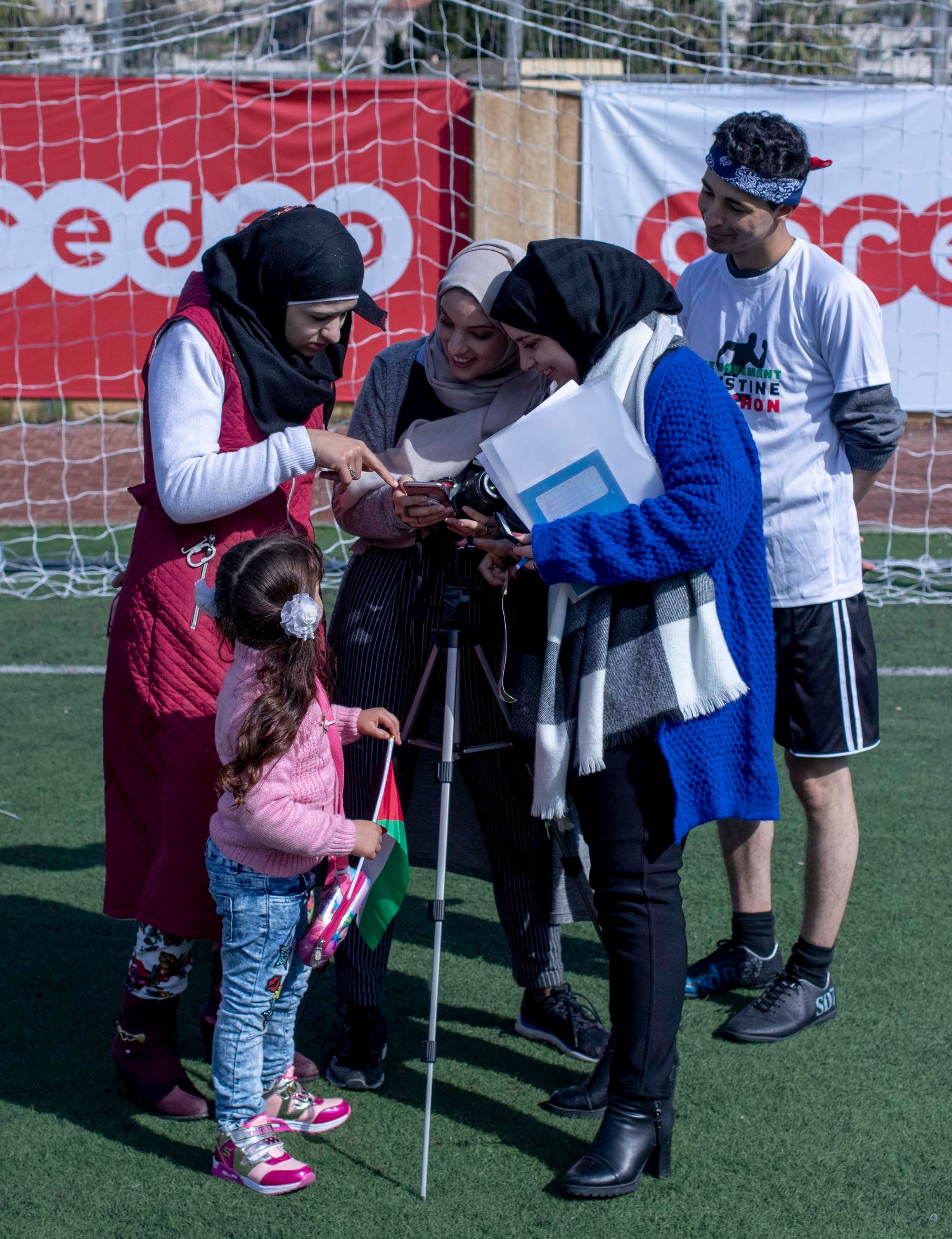
Crossing into Palestine from under the segregation wall will always remain a vivid memory, one that i can recall in all its immediacy. The absurdity of a towering wall of concrete, the barbed wire snaking along the top, the turrets that jutted out at regular intervals, the tunnel underneath. I remember feeling a sense of awe at the attempt at absolute separation—something we had felt across our time in Israel. We had been confronted with the story of Israel’s creation far too many times, and always suspected the resounding silence surrounding what came before Israel and what it replaced. It was only after our initial visits to the occupied state of Palestine that we discovered the malls that were built over Arab cemeteries, the manicured gardens that stood in place of orchards and the hotels and shops that were built in abandoned homes, claimed by force.
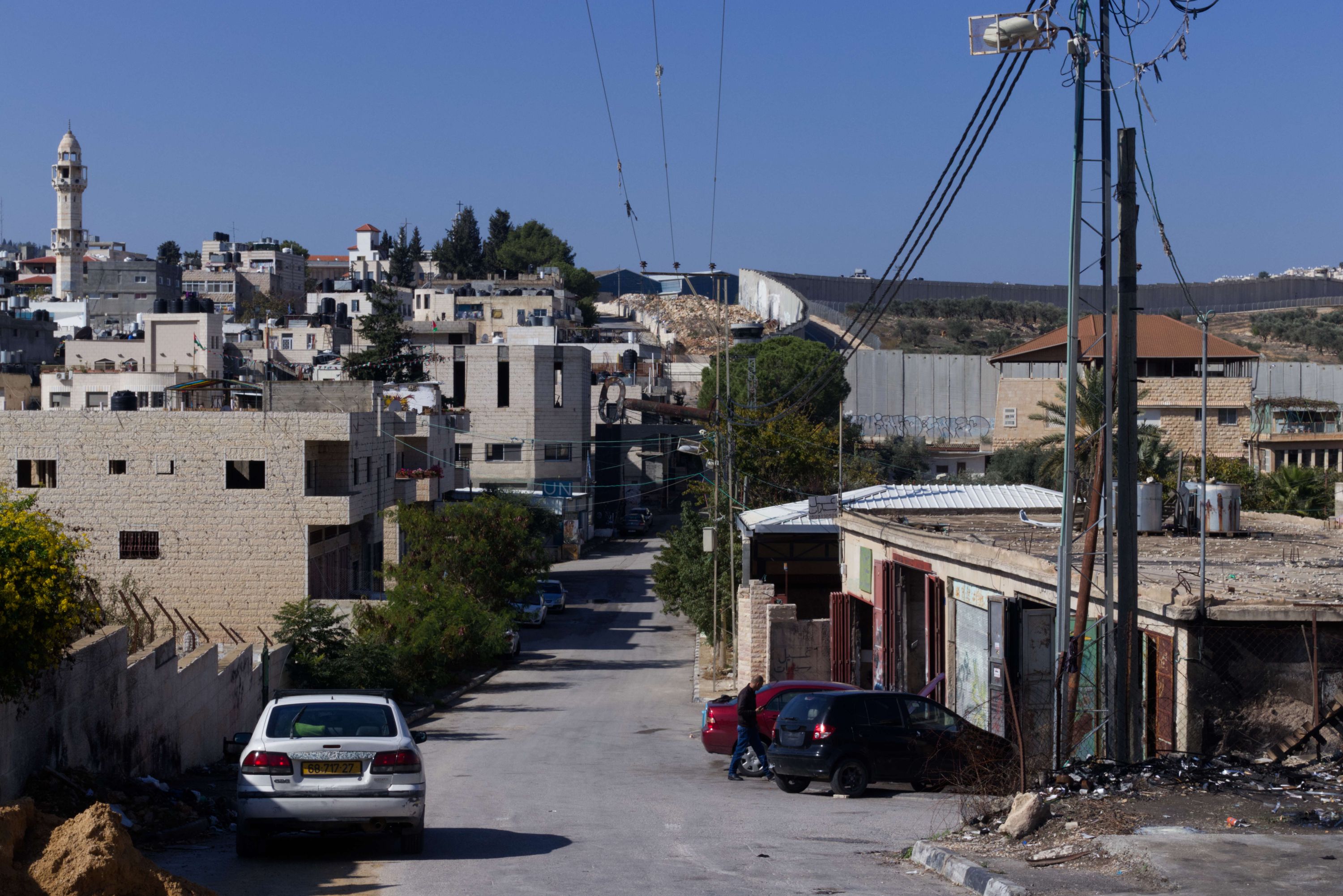 The segregation wall weaving through settlements in Bethlehem.
The segregation wall weaving through settlements in Bethlehem.
As an exchange student in Israel, we were confronted by the machinations of an oppressive and unsecular state, of a systemic cleansing that was being carried out behind the segregation wall. Across the 4 months that we lived in Israel, we would sneak across the segregation wall to literally understand the other side of the story, which was hard to come by in Tel Aviv. In contrast to the alienation and loneliness that i felt in Israel, Palestine felt closer to home. I had one extra month in Israel towards the end of my exchange program, and i was determined to spend this time working in Palestine.
I volunteered at Project Hope in February, 2019. I was accompanied by Dhruva, a dear friend. The two of us had been inseparable companions for the entire duration of the exchange program, and in that same spirit he had decided to come along with me to Nablus. The city is located towards the North of the West Bank, and is spread out across two facing hillsides, descending into the valley as dense clusters of buildings which form the heart of the city.
 View of Nablus from one of the hills overlooking the city.
View of Nablus from one of the hills overlooking the city.
Since we were indigent students with barely a shekel to spare, Hakim, the director of Project Hope, had been extremely generous to offer us free accommodation in exchange for our time and contribution to the organisation. We offered to conduct a short workshop in film making, since both of us were quite experienced in making low-budget DIY films that just required smartphones, hacky duct-tape tripods and free editing software.
We hadn’t anticipated how many participants would show up. Noura, who was the coordinator for these workshops, had mentioned that a ‘few’ people had expressed interest. So you can imagine our surprise when 30 people showed up on the first day. I had conducted a few workshops in the past, but all of them were either with children or college students, who spoke a language that i was familiar with. This was a completely new experience, since all the participants spoke Arabic, and only a few were able to converse in English. We required some participants to volunteer as interpreters, who fed a rough translation of everything we said to the group, and helped translate questions from the group into English. Even across this language gap, seeing the enthusiasm of the group was ample incentive to fuel our work. Everyone came from diverse backgrounds— from working professionals, to college students, to home-makers.
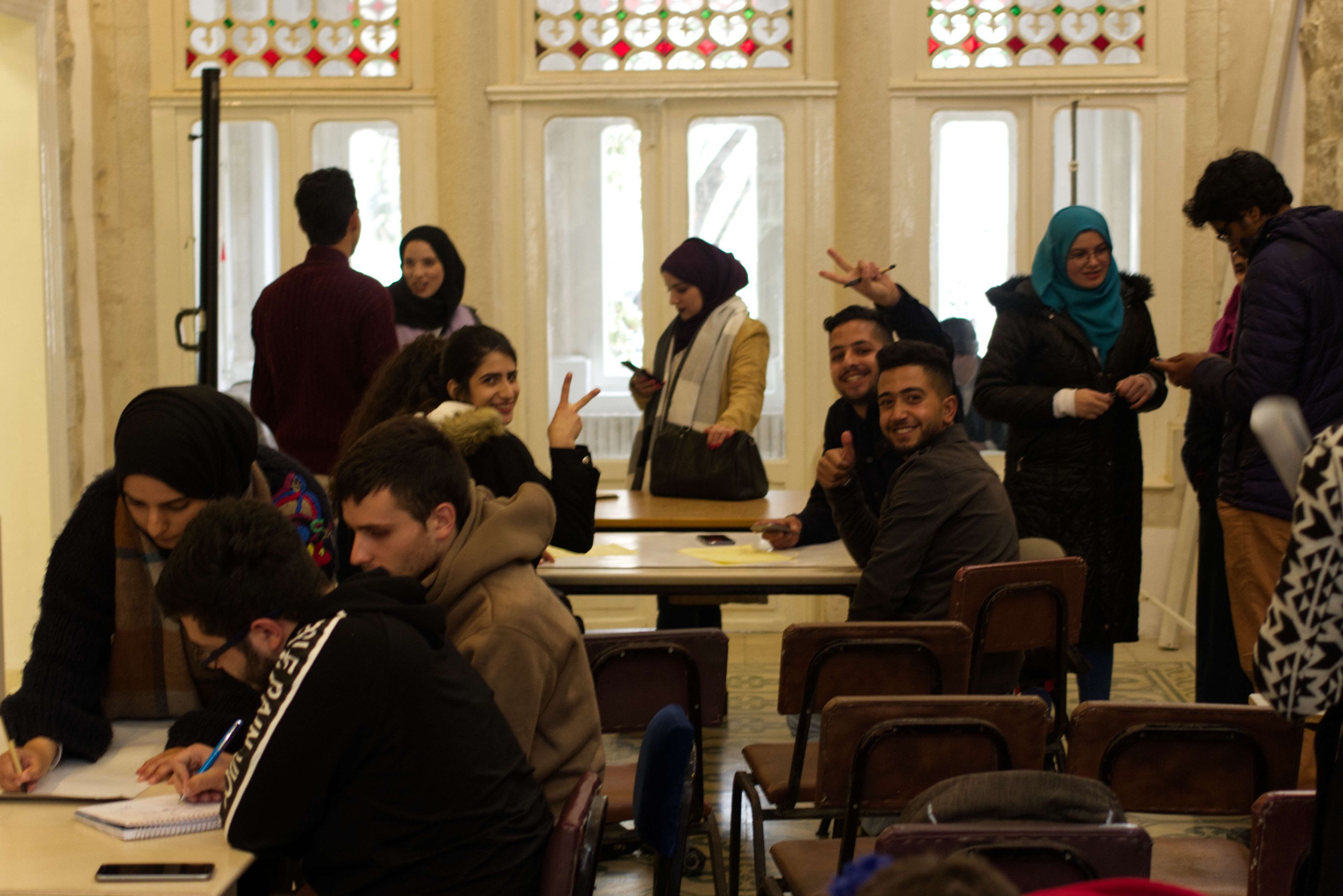 The workshop in progress at Project Hope’s office in Nablus.
The workshop in progress at Project Hope’s office in Nablus.
We wanted the format of this workshop to be more production driven, diving right into making films rather than spending hours understanding what goes into it’s making. We established that the entire workshop would be artefact driven— that we would work on films and then learn different techniques and theories as an outcome, which would in turn assist us in making the next film. The participants were divided into groups, and over the course of 3 weeks each group made 3 films.
To get them started, the challenge on the first day was to make a 1 minute film. It could be about absolutely anything. Dhruva and i made a demonstration film for the participants, which we planned, shot, and edited in the matter of a few hours. It was a simple story, about my first experience of the local delicacy, Kunafeh, and was shot that morning over breakfast with the Project Hope team.
Seeing the film, there was an immediate excitement that the participants showed. All of them quickly got down to planning their story, heading out to find locations to shoot. When they came back and presented their edited films, we saw some wonderful attempts. Although these were replete with over the top transitions, effects, inaudible dialogues and subpar acting, seeing one another’s work provided the participants avenues to compare, discuss and learn.
Here’s a film that a group made in the first activity:
Over the course of 3 weeks, we went over the basics of film, glimpses into it’s history, camera and editing techniques, and how to capture sound effectively. Many of these were shown as short demonstration clips that Dhruva and i made.
For the second exercise we encouraged the participants to plan their film, introducing them to scripts and storyboards. This would help them think through what techniques they would want to use.
One of the groups wanted to make a short film about a football match, and they requested Dhruva and me to participate as actors. We met them at the local football stadium and enacted a match between Palestine and India, which was such fun. Due to the lack of actors, the audience looked uncannily like the players themselves.
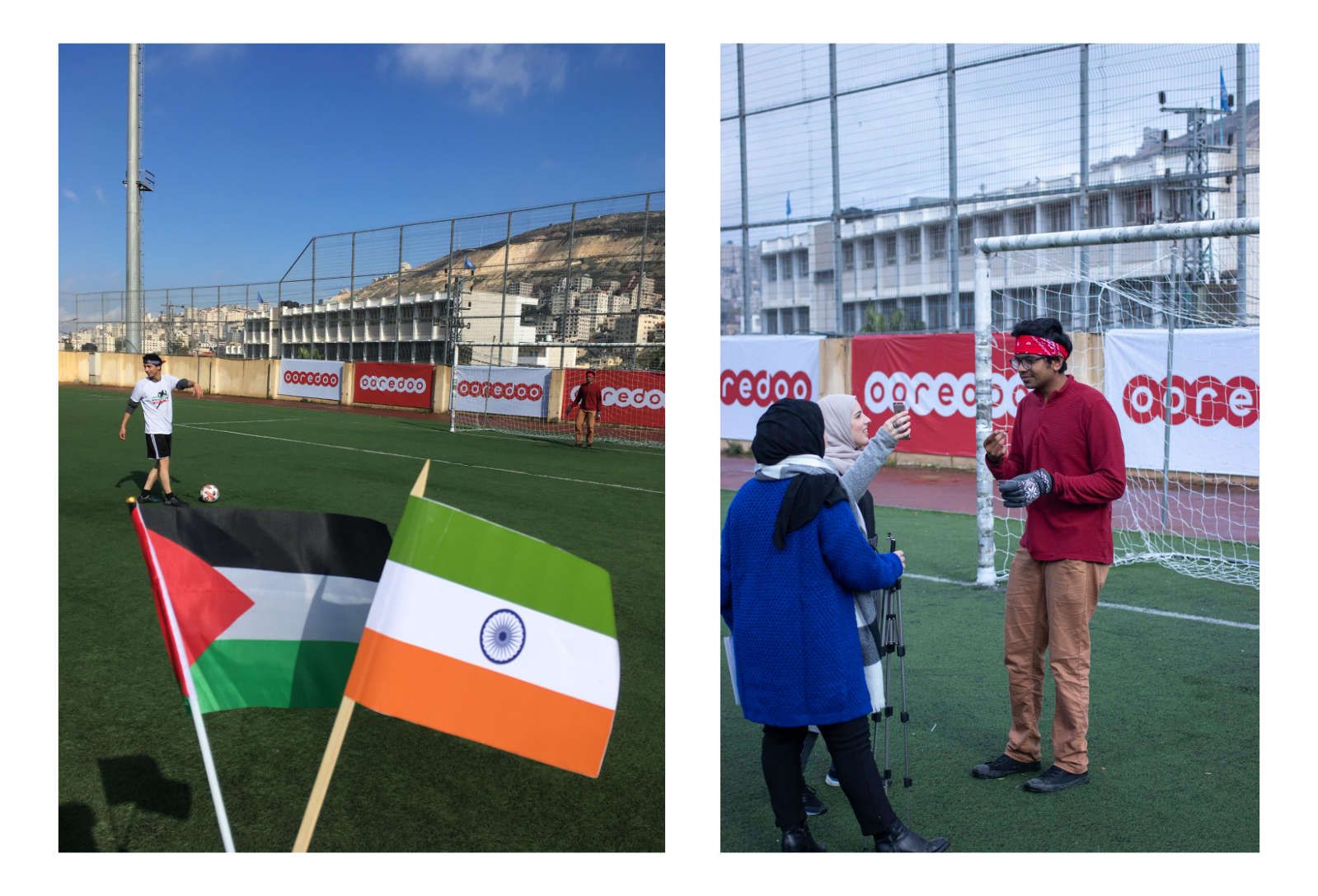
All the films at this stage showed immediate improvement in the story, camera work and editing. Having a script and storyboard help the groups plan more complex scenes and bring a few more actors on board.
As we were planning this workshop, Dhruva and i were being extremely careful about the style of critique and feedback we employed. Knowing that our own education had largely been around world cinema, with certain accepted standards of film making, usage of specific formats, reliability of age-old workflows, etc., we were keen to encourage a more organic style of film making, and had to make sure that our feedback or critique did not standardise the process of creation. In some cases, participants shot the films on their phones in a portrait orientation, and in others, they pasted relatively jarring audio from the most popular tracks in Palestine all across the duration of their films. We had to weigh in our feedback to see how best to encourage a more contextual method of film-making, something that the participants find suitable and relatable while at the same time providing some practical guidelines that might make the film more accessible and comprehensible.
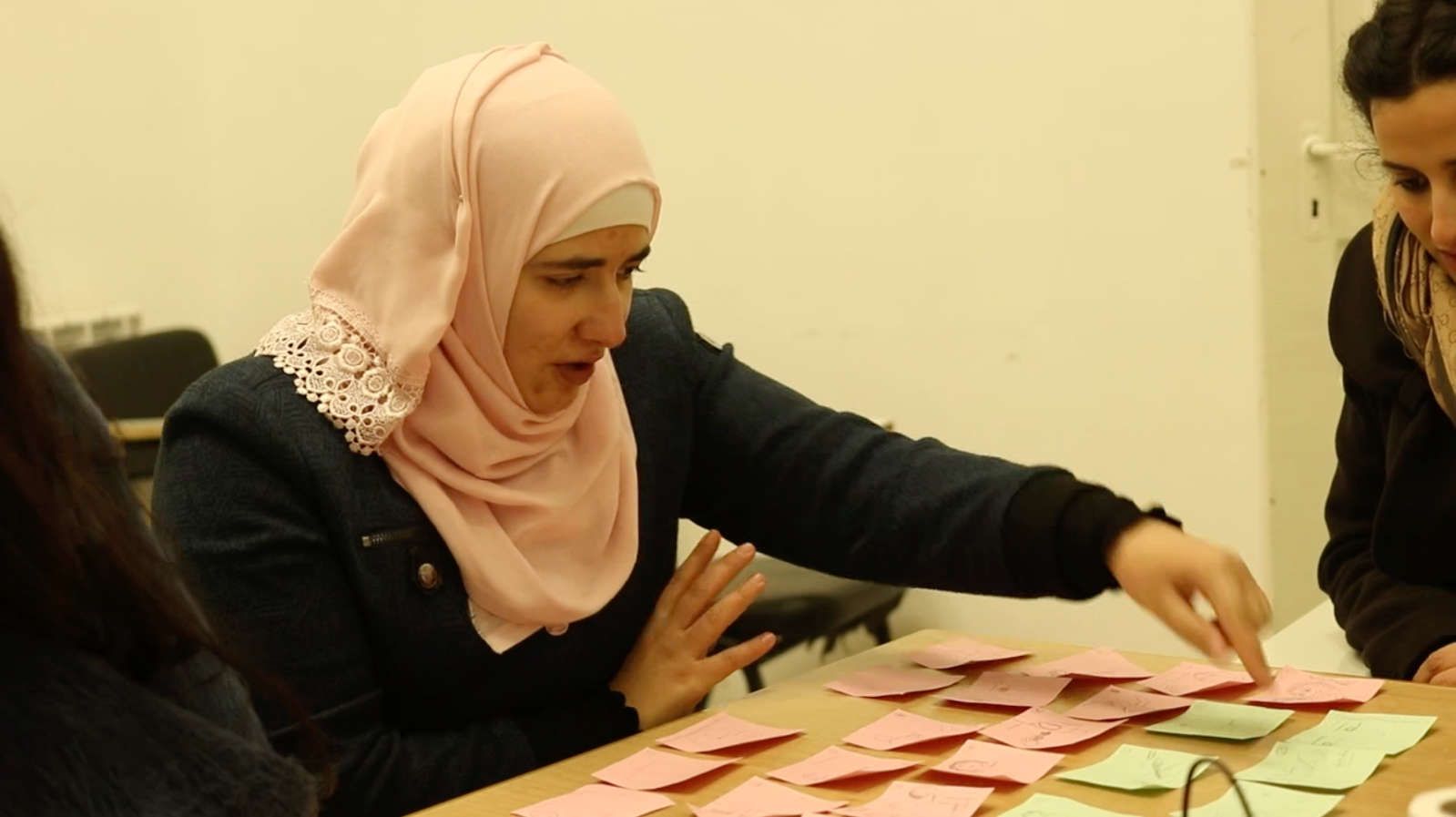 One of the participants, Heeba, working on her storyboard.
One of the participants, Heeba, working on her storyboard.
For the last activity, we told the participants that the objective was to make a Nablusi film— one that could display a facet of what life in Nablus looks like. The film could borrow from their own personal experience, but it has to capture an essence of the city and it’s people within it.
All the films that emerged from this activity were fantastic, displaying an improvement in the group or the individual’s thinking around the film. The films captured stories that ranged from those that were deeply personal and reflexive, to others that were exploratory and playful. I have mentioned a few which especially caught my attention.
Heeba worked on a short film about a group of women socialising over coffee in the morning after the men have left for work. What i loved about the film was the way she played with composition, and how beautifully the film captures the essence of the mornings in Nablus, something i am able to revisit every time i see the film.
Reem worked on a film about her son and the mess he is capable of making at home. However, she attributed this to be a feature of several households in the West Bank as parents are unwilling to send their children to playgrounds and other public spaces due to the constant presence of the IDF, and the risks associated with it. Due to this detention at home, many of the children end up making the home a playground, adding to the work of the women and caregivers.
Dima and Rand made a film about the struggles of adolescents in Palestine, who aspire for careers in art but are pressurised to take more conventional professions instead. This, in part, is influenced from their own experience as aspiring film-makers. A lack of employment opportunities due to the Israeli occupation leads to families pushing their children to take up more ‘stable’ professions like engineering or medicine, careers that are bound to be in demand. Dima and Rand did some amazing work with the visualisation of the story, making use of metaphors and experimenting with camera movement.
Another group made a short film about Nablus in response to our film about Kunafeh. This was also great to watch, as the story tries showing what else is great about Nablus beyond the Kunafeh, and takes the viewer through the winding lanes of the Old Town, into the spice markets and the glass workshops, providing a glimpse into the pieces that create Nablus’ identity.
For all the brutal realities that the participants have had to face, throughout the course of their lives, the films that emerged from this workshop were so astoundingly ‘every-day’, attending to the little things that make up our lives. What we found ourselves looking at through these films was the ideology of ‘Sumud’ in practice. ‘Sumud’ is the value of perseverance and steadfastness, that has been practiced by Palestinians for decades in the face of the violence and suffering wrought by the Israeli occupation. It is the form of resistance that seeks to undermine the occupation, by choosing a path between acceptance of the occupation and opting for violent struggle, and in this manner paving the way forward to the vision of a free Palestine. The films could have been about the occupation, about the grief and trauma that is entrenched into their society. But instead, all the films that the participants made chose to document simple stories, providing entry points for Dhruva and me into their lives beyond the truth of the occupation.
To see this side of violence, to acknowledge the hope that these stories enshrine, and to be witness to the zest of human resilience was an experience that shaped my life in the most fundamental ways.
 The Field Notes
The Field Notes